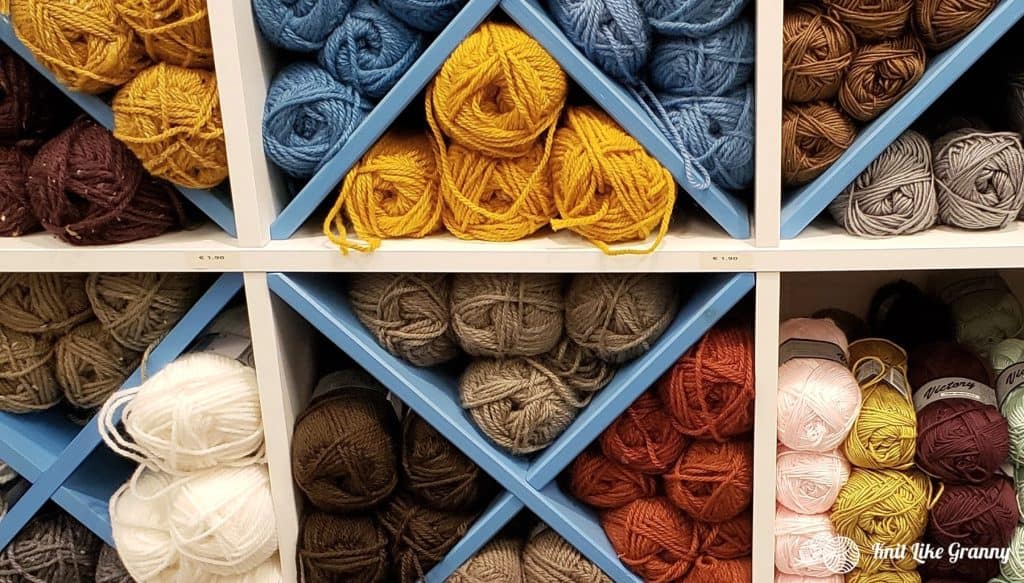“Frogging” refers to unraveling, ripping out, or undoing a project. It’s usually due to a mistake or a need to make changes to the project. It comes from the sound “rip it, rip it,” which is what many knitters say as they unravel their stitches.

Frustrated Teacher Quits In Disgust, Sells The Farm, Moves The Family Halfway Across The World And… Starts Knitting
To Frog Or To Not Frog?
The decision to frog or not to frog is an important one for any knitting project. There are various reasons why we might consider frogging our work. These include errors such as incorrect stitches, dropped stitches, wrong tension, pattern mistakes, wrong increases or decreases, changing the design, backwards stitches, incomplete stitches, and unwanted stitches.
As I work on my knitting projects, I often have moments where I need to decide if I should frog my work. While frogging allows me to correct my mistakes and maintain a high-quality result, it can also be time-consuming and frustrating.
My advice for other knitters would be to approach frogging with a friendly mindset. Don’t be too hard on yourself; everyone makes mistakes. Consider frogging as an opportunity to learn and improve your skills.
How To Do Frogging In Knitting
Preparing
Before I start frogging my knitting, I make sure to have patience and a calm approach, as frogging can be frustrating. I’m very careful to undo all the stitches in a way that doesn’t tangle the yarn. I start slowly and wind the yarn into a ball as I go.
Frogging Part Of Your Project
If I only need to frog part of my knitting, especially when I need to rip out a few rows, I carefully examine the rows and stitches to determine where my mistake lies. To begin unraveling, I remove the knitting needle and gently pull on the yarn to undo the stitches until I reach the mistake.
It’s important to keep track of the rows being ripped out, so I know where to restart my pattern.
Frogging Your Entire Project
When I have to frog my entire knitting project, I take out my knitting needles and unravel every row and stitch, and wind the yarn around the back of a chair as I go.
Yarn that’s been unraveled is usually very kinked and it’s better to wind into a big loop and then tie off with scrap yarn in 4 different areas. Then wash the yarn to remove the kinks and then leave to dry.
If I’m working with a delicate yarn like mohair or a novelty yarn, I’m extra cautious because these yarns have a tendancy to get into knots.
Rewinding Your Yarn
I highly recommend washing your yarn gently first to remove the kinks and then once dry rewind by hand or place on a swift and use a yarn winder to create a neat yarn cake.
Start Knitting Again
Once I’ve successfully frogged my knitting project and rewound the yarn, I start knitting again. I use such as lifelines when there are difficult pattern repeats, to ensure that I don’t make the same mistake again.
Lifelines act as a safety net by threading a contrasting yarn or thread through a row of stitches at regular intervals, which effectively creates a safety line through the stitches. This technique helps me pick up stitches more easily if I need to frog my knitting again.
FAQS About Frogging In Knitting
How does frogging differ from tinking in knitting?
Frogging and tinking are both techniques used to correct mistakes in knitting. Frogging involves unraveling multiple rows or the entire project, while tinking refers to undoing one stitch at a time, working backward through the project.
Tinking is slow but precise, while frogging is faster but still requires time and care when picking up stitches afterward.
What is the best way to frog ribbing?
Frogging ribbing can be a bit trickier than unraveling simple stitches, as the alternating knit and purl stitches require more attention.
The best approach is to take it slow. Undo each stitch one at a time, paying attention to what kind of stitch it is.
If you encounter a purl stitch, make sure to undo it from the back side, and if it’s a knit stitch, undo it from the front side. This will help maintain the integrity of the ribbing pattern throughout the process.
How do you pick up stitches after frogging?
Picking up stitches after frogging requires some patience and care. First, make sure you’re working with the correct side of your project facing you.
Lay the project flat on a table, then carefully insert the knitting needle through the loops of each stitch in the row you stopped frogging. Make sure the loops are sitting on the needles properly.
It might help to use a smaller, pointed needle. Once all the stitches are on the knitting needle, you can resume knitting as normal.
Can I reuse frogged yarn for knitting?
Yes, you can definitely reuse frogged yarn for knitting. It’s perfectly normal for yarn to have kinks and bends in it from being previously knitted. I recommend you can a wash and block the frogged yarn to help smooth out its texture before reusing it.
Make sure to gently wind the yarn into a ball or skein, ensuring that it doesn’t become tangled or twisted during storage or while knitting with it anew.



